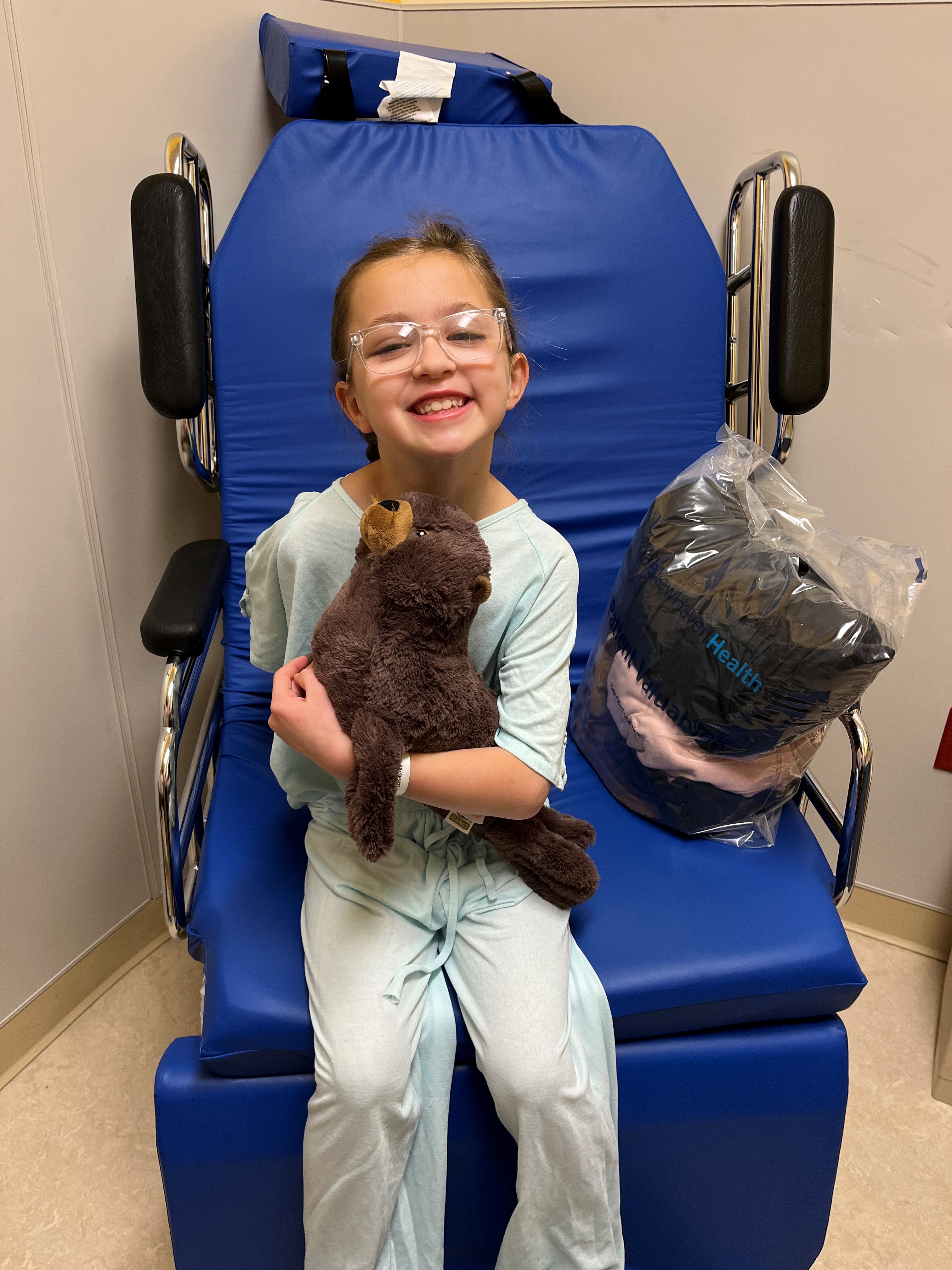For much of her life, 17-year-old Alena overcame the missing area in her brain – with a new diagnosis, could she do it again?
When her daughter Alena was a baby, Stacie D ’Antonio got a call she was waiting for, but unprepared to receive.
“We brought Alena for an MRI when we noticed her hands shaking,” said Stacie D’Antonio, educator and mother of three. “We knew something was off, but we were shocked to learn the diagnosis.”
Stacie was informed that her daughter had a condition called agenesis of the corpus callosum, which is characterized as a missing bundle of nerves that connects the right and left hemispheres of the brain.
When they looked it up, the D’Antonios saw a range of symptoms – from major cognitive impairment to people who never knew they were missing anything until they got in an accident and had a brain scan.
Alena’s condition is rare but not unique. With greater use of neuro-imaging techniques scientists are seeing increased rates of diagnosis with estimates as high as 7 in 1000.
Despite challenges, Alena had a normal childhood alongside her twin brother and older sister. She understood her delays and diligently went to speech therapy. She was close with her siblings. When she entered high school she began looking into colleges where she could major in fashion merchandising.
At the start of the pandemic Alena had to switch neurologists. Her new neurologist recommended an updated MRI – just a routine scan since Alena hadn’t had one since she was a toddler. The next day, Stacie received a familiar call.
“The neurologist asked me if I was alone and could talk and I just thought what on earth could she be telling me? We already know a part of Alena’s brain is missing!” The MRI showed a tumor on Alena’s brain. Alena would need to meet with a surgical team immediately.
The next day, the D’Antonios piled into a room with several doctors. Eyiyemisi Damisah, MD, neurosurgeon, Yale New Haven Children’s Hospital and professor of neurosurgery at Yale Medicine, did most of the talking.
The tumor was located in the right supplementary motor area (SMA), a region of the brain that controls complex movements and speech. Treating the tumor would require removing portions of this area, causing temporary loss of function. In an average patient, the corpus callosum often facilitates a re-wiring of the brain to regain full function. However, there had never been any documented cases of a patient without a corpus callosum recovering from SMA removal.
Three weeks went by between the meeting in the crowded room and Alena’s surgery. During that time Alena was put through tests to assess the risks of surgery and how her brain performed functions without a corpus callosum.
Dr. Damisah discovered that as a baby Alena had a major language delay, but her networks of neurons managed to rewire themselves to correct this deficit. After this surgery, could it happen again? Dr. Damisah’s extensive experience in treating functional disorders made her hopeful, but she wasn’t sure.
After learning the tumor carried risks of impaired function and death, the D’Antonios knew they could not leave it in Alena. Dr. Damisah explained to the family that after surgery Alena would temporarily be unable to talk or use her left side.
After eight hours the DAntonios were rushed to Alena’s side and found Alena awake and – talking. She was speaking like a toddler, which worried Stacie, but Dr. Damisah could not believe Alena was speaking already.
“We could almost hear her brain rewiring,” said Dominick. “She had all of these word associations. She was talking about friends and discussing people who passed away and then she told us she missed Harry Styles. It was a much needed funny moment.”
Alena went to a rehab facility to learn to use her left side. Upon discharge, while still in a wheelchair, Alena committed to running the Gaylord Gauntlet the following year.
“We have a big, supportive family and that helped my recovery,” said Alena. "My siblings encouraged me and I had a lot of visitors. The whole time I thought that this is something I am dealing with in the moment, but I won’t give up on myself, no matter how long it takes me to get where I need to be.” Alena was playing softball two months after the operation and did in fact run the Gauntlet.
How did Alena recover?
A post-surgery fMRI scan showed that Alena’s left brain had taken over some motor functions of the injured right brain. Dr. Damisah hypothesized that with the missing corpus callosum, both sides of Alena’s brain picked up function and one of them was silenced during everyday activities. When the SMA was removed, the silenced function on the healthy side was unmasked, allowing Alena to regain motor and speech functions. This insight, which was published in Neurology, has positive implications for people recovering from stroke and head traumas.
“We couldn’t be prouder of Alena,” said Stacie. “As an educator and an education advocate, I have learned that when you have the right people working in the right areas there’s an opportunity to change the outlook of a situation.”




